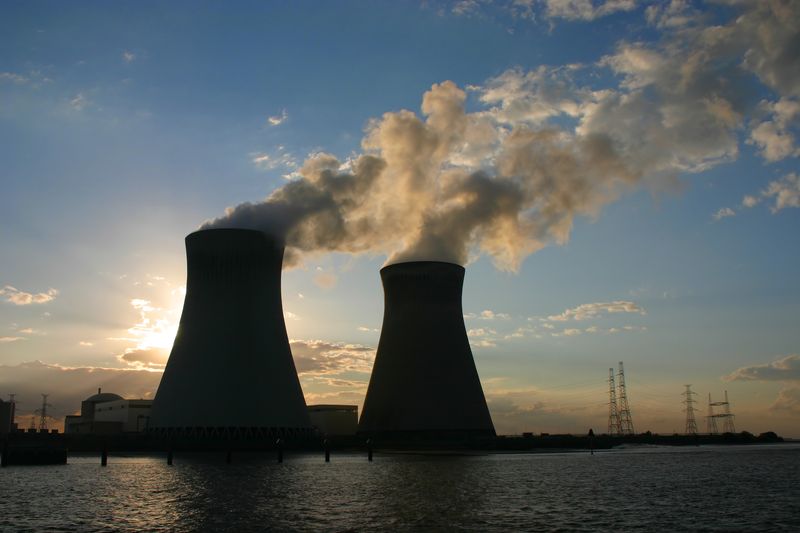Revenue during nuclear construction
Receiving revenues during construction is a definitive positive from a credit perspective and indeed an equity perspective. There is, of course, a cost to providing this sort of support. As projects get bigger and more complex, there is a risk the obligations during construction could be stretched too far.

Attracting investors into greenfield nuclear power projects is hindered by one key fact: the long construction period. Until progress is made in shortening the timescales from the current 10–15 years, it will be virtually impossible to get equity to invest.
In the UK, the solution adopted for the £38bn, 3.2GW Sizewell C project is to provide revenues during construction. The cost, which goes straight onto consumer bills, is interesting. Centrica will be getting £800m during construction for its £1.3bn, 15% stake. Pro rata this means £5.2bn will be paid out to all the shareholders during construction although the government will presumably plough the dosh from its 44.9% stake back into the construction cost.
Here is how Centrica CEO Chris O'Shea described the deal to analysts: "So we'll put in £1.3bn, we'll get £800m out ..." Indeed. "So we'll have a net investment of £500m. But the £800m we get out is not all of the return. There's also some return that's rolled up, which will help build the regulated asset base."
In reply one analyst asked: "Why did you not go beyond this (15%) given the cash yield you are getting, the overall cash commitment is not excessively large."
There are two parents behind the idea of Sizewell – Hinkley Point C and Thames Tideway Tunnel. On the deal to fund the same sized Hinkley nuclear scheme, EDF and China General Nuclear Power Corp backed the project 66/33 via a contract for difference strike price model. They carried the construction costs and as a result no other equity investors would join. That risk has proven very large with the scheme having gone way over budget and time. EDF has now got its stake on Sizewell C down to 12.5%.
The Tideway scheme has proven more successful – albeit because the construction outcome has been reasonable. But Tideway introduced the concept of revenues during construction paid through consumer bills. Sizewell, four times the cost of Tideway, has turbocharged the concept. As an aside, it is interesting that Julia Pyke, Sizewell joint MD, and Mike Gerrard, chair of International Public Partnerships, ended up in the Sizewell deal having been heavily involved in Hinkley and Tideway respectively.
Revenue during construction is backing another major UK construction project – the £2.5bn–£2.9bn Haweswater Aqueduct Resilience Programme water scheme procured by United Utilities and being built out by the Strabag/Equitix consortium. The project has an eight-year construction programme, so pre-operational revenues are required. But as the project is an upgrade rather than a new build, presumably some revenues can come from United Utilities' existing resources. Presumably. Financial close on the project is said to be imminent and the deal could benefit from a National Wealth Fund first-loss tranche.
Revenues during construction is a fairly straightforward concept. The idea is standard on expansion financings. Build an add-on to say a petrochemical scheme in the Gulf and cashflows from the existing project will boost the credit profile of a new expanded deal. There is a trade-off between getting dividends out of the existing project and the lower costs of interest on the new financing given the improved credit profile.
In the US the nuclear economics have been improved by taking old plants and restarting them. Costs have been reduced and the schemes can come online in three or four years. Restart projects have been launched at Holtec's Palisades nuclear plant in Michigan and Constellation's Three Mile Island nuclear plant In Pennsylvania. NextEra is considering a restart of Duane Arnold in Iowa. Constellation is spending US$1.6bn to restore its plant, which will be backed by a 20-year power purchase agreement with Microsoft from 2028. Apparently construction on Three Mile Island is ahead of schedule and the scheme could open in 2027. There are plenty of shutdown nuclear plants in the US.
EDF owns the current 6GW fleet of nuclear power stations in the UK with Centrica having a 20% stake. Given the size of the Sizewell investment, having cashflows available from those existing plants to help fund the new one was not an option. But into the future ways must be found to link real pre-construction revenue streams with new projects rather than simply adding onto consumer bills – difficult as that may be.
Having sponsors exposed during construction not just for that risk but for their own revenues is a real incentive to ensure they crack on with the scheme. Hinkley has shown that some construction problems are seemingly intractable but hopefully this is a one off.





